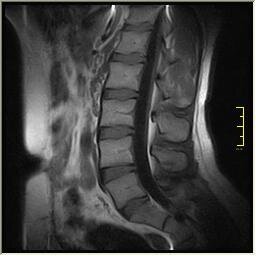
Imaging Overused for Low Back Pain in Elderly
June 02, 2009WASHINGTON, DC—Though rarely indicated, X-rays or advanced imaging scans to detect the source of low back pain are overused for certain elderly patients, mainly those treated in large practices that offer patient satisfaction-based financial incentives, according to new research in the Archives of Internal Medicine.1
Imaging ordered for nearly one-third of elderly with low-risk LBP
{}Spine imaging for patients who do not have symptoms suggesting systemic disease or neurological conditions rarely improve outcomes in LBP, but this analysis showed that 28.8% of the low back pain patients underwent imaging within 4 weeks and an additional 4.6% had imaging scans within 6 months. Of these, 88.2% received X-rays initially, while 11.8% received CT/MRI.
Patients were more likely to undergo imaging tests if their primary care physician worked in large practices and if the doctor was offered patient satisfaction-based financial incentives. Practices with clinical quality-based incentives, however, were less likely to order advanced imaging tests for low back pain patients in the absence of clinical red flags.
White patients received higher levels of imaging than black patients or those of other races, the study showed. In general, Medicaid patients received less rapid or advanced imaging than other patients. The researchers could not determine whether or not the imaging was appropriate for the patients in the study.
 |
| Normal Lumbar MRI |
Translating research into practice: just say no to imaging in low-risk back pain patients
The problems with the overuse of advanced imaging for low back pain are well-published multi-fold, writes Richard A. Deyo, MD, MPH, of Oregon Health and Science University in Portland, in an editorial accompanying the new study.2
For starters, advanced imaging of the spine has a low yield of unexpected findings and an “alarmingly high” yield of irrelevant findings.
Not only does spine imaging of patients with no signs of systemic or neurological conditions not improve patient outcomes, there are also risks to lumbar spine imaging, such as excess radiation directly to the gonads. “Beyond that, there is evidence that simply knowing about some abnormality in the spine may adversely affect patient behavior,” Dr. Deyo writes.
Much imaging done in response to patient demands
Unfortunately, many patients with low back pain demand these imaging tests. “Patient expectations and convictions in the value of high technology may contribute to overuse,” Dr. Deyo said.
So what is the solution? “It seems unwise to equate patient satisfaction with better health outcomes, and satisfaction-based incentives may foster overuse,” Dr. Deyo said. Going forward, “it may be necessary to redouble our efforts at patient education as there is some evidence that brief patient education can help to maintain patient satisfaction when imaging is not recommended.”
Dr. Pham suggested that insurers might also encourage better use of imaging. “Insurers could offer higher co-payments for services that tend to be overused, but lower or no copayments for generally underused services,” Dr. Pham said. “Bonuses [that] encourage physicians to avoid overused services or increase underused services in the absence of clinical red flags is another alternative tool.”
Meanwhile, Dr. Deyo advises that physicians should just say no to imaging for low-risk back pain patients.
References
1. Pham HH, Landon BE, Reschovsky JD, et al. Rapidity and Modality of imaging for acute low back pain in elderly patients. Arch Intern Med. 2009;169:972-981.
2. Deyo RA. Imaging Idolatry. Arch Intern Med. 2009;169:921-923.